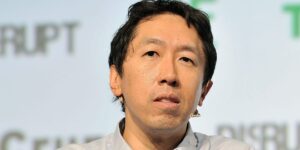Nvidia Seeks to Broaden AI Initiatives Beyond Semiconductors
Nvidia’s Strategic Moves in the AI Landscape
Understanding Nvidia’s Position
Nvidia, led by its CEO Jensen Huang, is taking decisive steps to solidify its standing in the rapidly evolving world of artificial intelligence (AI). As the demand for AI systems shows signs of fluctuation, Huang is focused on ensuring that the company is well-prepared for any market shifts. The AI sector’s significant growth has propelled Nvidia to a multitrillion-dollar valuation, making it one of the most valuable companies globally. Furthermore, Huang himself ranks as the 15th wealthiest individual in the world, thanks in large part to this expanding market.
Current Challenges Facing Nvidia
Despite its success, Nvidia is not without challenges:
- Competition: Other companies are attempting to lower Nvidia’s prices, presenting ongoing competition in the chip-making space.
- In-House Manufacturing: Some customers are exploring options to develop their own chips, which could potentially diminish demand for Nvidia’s products.
- Regulatory Issues: Tariffs and national security concerns are complicating sales, particularly to China.
- Emerging Alternatives: The introduction of competitive AI models, such as the one from DeepSeek, has raised alarming questions about the sustainability of the current AI boom. This model, which reportedly offers similar capabilities at a lower price, resulted in Nvidia seeing a massive decline in market value—almost $600 billion—in a single day.
Upcoming Strategy Focus
As Nvidia prepares for its annual conference, all eyes are on Huang and his plans for the future. Reports suggest that he will emphasize the company’s extensive efforts to push the boundaries in AI technology. Nvidia’s goals include:
- Diversifying Products: Beyond just chip manufacturing, Nvidia is aiming to develop software solutions that can be beneficial across various sectors.
- Encouraging Investment: The company wants to inspire other businesses to invest heavily in AI technologies.
In a recent earnings call, Huang indicated that sales for Nvidia’s latest chip architecture reached record levels in the previous quarter, suggesting continued robust demand for AI solutions. He expressed optimism about the future, noting that the current wave of AI innovation is just beginning.
The AI Evolution
Huang pointed out that the AI space has progressed at an incredible pace, having only entered its second year of significant advancements. He outlined several key phases in the evolution of AI:
- Generative AI: The first phase has made AI accessible to consumers, allowing individuals to create content and utilize AI-driven tools.
- AI Agents: Currently, there is a transition toward business-oriented AI agents, which will assist organizations in automating processes and decision-making.
- Physical AI: Looking ahead, Huang foresees a future where robotics and physical AI applications become mainstream parts of daily life and industry.
Huang firmly believes that AI will become deeply integrated across all sectors, emphasizing its mainstream acceptance.
Final Thoughts
Nvidia’s proactive strategies under Jensen Huang’s leadership position the company to navigate challenges while capitalizing on opportunities within the AI landscape. As the company continues to innovate, it is likely to play a key role in shaping the future of technology. With the upcoming conference, stakeholders and industry watchers will be keen to see how Nvidia plans to secure its foundation amidst an ever-changing environment.





